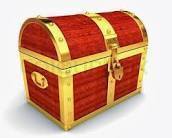Ukraine

Basic Data:
-
Country ISO Code: CH
-
Official Language: German
-
Language ISO Code: de
-
Current Official Currency: Swiss Franc
-
Current Currency ISO Code: CHF
Complete Financial History of the Swiss Franc:
Swiss Franc (CHF) – Current Official Currency
-
Currency ISO Code: CHF
-
Designs / Symbols: Coins feature the Swiss coat of arms, the Swiss cross, and alpine motifs; banknotes depict cultural, scientific, and historical Swiss figures and bear signatures of the Swiss National Bank’s president and vice president. Common symbols include "Fr.", "SFr.", and "CHF".
-
Singular Name: Franken
-
Plural Name: Franken
-
Monetary Subdivision: 1 Franken = 100 Rappen
-
Fraction Name Singular: Rappen
-
Fraction Name Plural: Rappen
-
Initial Production Date: 1850
-
End Production Date: still in circulation
-
Initial Circulation Date: 1850
-
End Circulation Date: still in circulation
-
Mint: Swissmint (Eidgenössische Münzstätte), Bern
-
Issuing Bank: Swiss National Bank (Schweizerische Nationalbank)
-
Coin Denominations Currently Minted: 5, 10, 20 Rappen; ½, 1, 2, and 5 Franken
-
Banknote Denominations Currently Issued: 10, 20, 50, 100, 200, and 1,000 Franken
Historical and Economic Context:
-
Prior to the Swiss franc’s introduction, Switzerland had over 800 different coins and banknotes circulating, minted by about 75 different entities, causing monetary confusion.
-
The Swiss franc was first introduced in 1798 by the Helvetic Republic but became the sole legal tender nationwide only in 1850, replacing all previous currencies.
-
The 1848 Swiss Federal Constitution centralized the right to issue currency exclusively to the federal government.
-
The Federal Coinage Act of May 7, 1850, formally established the Swiss franc as the national currency, initially pegged at 4⅓ French francs.
-
Switzerland joined the Latin Monetary Union in 1865, linking its currency to a gold and silver standard until the union dissolved in the 1920s.
-
The Swiss franc was devalued by about 30% during the Great Depression in 1936.
-
From 1945, the franc was pegged to the US dollar under the Bretton Woods system until 1975, when Switzerland adopted a floating exchange rate.
-
The Swiss franc is renowned for its stability, low inflation, and status as a safe haven currency during political and economic crises worldwide.
-
Switzerland’s neutrality and strong financial institutions contribute to the franc’s global reputation and investor confidence.
Mint and Production Details:
-
Swissmint, located in Bern since 1906, is responsible for minting circulation and commemorative coins, as well as authenticating and recycling coins.
-
Early coins were minted abroad in Paris, Strasbourg, and Brussels before Swissmint was established.
Commemorative Coins and Curiosities:
-
Swissmint issues commemorative gold and silver coins celebrating national events, personalities, and cultural heritage.
-
The Swiss franc is also legal tender in Liechtenstein and the Italian exclave of Campione d’Italia.
Current Circulation Status:
-
The Swiss franc remains the official currency of Switzerland and is in active circulation.
Issuing Authority:
-
The Swiss National Bank is the sole authority for issuing banknotes and managing monetary policy.
Summary of Coins and Banknotes Currently in Circulation:
| Type | Denominations in Circulation |
|---|---|
| Coins | 5, 10, 20 Rappen; ½, 1, 2, 5 Franken |
| Banknotes | 10, 20, 50, 100, 200, 1,000 Franken |
This report outlines the Swiss franc’s history from its introduction in 1850 to its current status as a stable, internationally respected currency, highlighting its production, economic context, and role as a safe haven asset.
- https://www.cash4coins.co.uk/the-history-swiss-currency/
- https://en.wikipedia.org/wiki/Swiss_franc
- https://www.oanda.com/currency-converter/en/currencies/majors/chf/
- https://corporatefinanceinstitute.com/resources/foreign-exchange/swiss-franc-chf/
- https://studyinginswitzerland.com/swiss-franc-facts/
- https://ggba.swiss/en/the-swiss-franc-an-indicator-of-the-countrys-general-stability/
- https://naga.com/en/currency/chf-swiss-franc
- https://www.bbva.ch/en/blog/sobre-bbva/sobre-suiza/franco-suizo-por-que-se-ha-ganado-el-titulo-de-activo-refugio.html
 Nilton Romani
Nilton Romani
